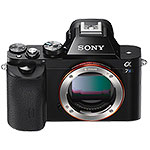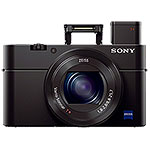Contour 1080p

- smashed highlights
- shutter roll
- get it anyway
- 4.6oz w/battery
If you're wondering whether or not to get a Contour 1080p helmet cam, I say go ahead and do it. Just be prepared to live with an array of annoying issues that, to be honest, shouldn't exist in a modern camera.
Like its predecessor, the 720p VHolder ContourHD, the Contour 1080p struggles with such basic tasks as white balancing, managing exposure, and maintaining consistent colors. That said, the Contour 1080p lets you capture dramatic POV video at a decidedly reasonable price point, and especially if you put in a bit of post-processing work with a good video editing suite, the results can be very impressive.
To understand why I'm so excited about VHoldR's ContourHD cams, watch a little bit of this Telluride video. I say nothing compares to the immersiveness of helmet camera footage, and in the HD realm, there is currently nothing available that matches the ContourHD's combination of price, features, and size.
Weighing less than five ounces, battery included, the Contour 1080p is about the size of an ultra-compact point-and-shoot digital camera, making it seemingly the perfect helmet-mounted cam for outdoor videographers both pro and amateur. But note the qualifier there. In putting together that short video of Telluride, I spent a full week battling the quirks and limitations of the Contour 1080p. The camera delivered daily frustrations, forcing me to junk shot after shot. Yes, it is possible to get stunning results with the Contour, but you're going to have to work for it.
first impressions
When my 1080p arrived, I immediately grabbed my old 720p ContourHD, held them side by side, and shot footage walking in and out of my apartment on a sunny day. My initial reaction? I was delighted by the 1080's improved resolution (1920x1080 progressive pixels versus 1280x720). The 1080 seemed to capture richer, more accurate colors, and its higher bitrate made for a sharper, more realistic picture. The lens seemed sharper as well, with visibly less distortion than its predecessor.
The Contour 1080p gives users limited control over the camera's internal settings. While the camera always shoots in a fully auto mode, you can manually set exposure and contrast compensation. You can also control bitrate, sharpness, and microphone sensitivity. Note that these settings can only be modified via computer, so unless you're skiing with you laptop, you only get to make changes at home—not in the field. Note also that these adjustments don't always do what you expect.
mounting issues
Issues old and new soon revealed themselves on my first in-the-field shakedown with the new 1080p Contour. I remain unhappy with Contour's various mount systems. To get the shot you want, you need to correctly aim the Contour 1080p in three dimensions: pan, tilt, and rotation. Get any one of these wrong, and you'll have off-axis footage, or a shot of your feet, or a wildly-angled horizon—or some combination of all three. Since the camera has no LCD screen to monitor video live, Contour has added twin lasers to assist in aiming it. However, the lasers are of marginal usefulness: hard to see in daylight, and not accurate enough anyhow (due in part to parallax error) to ensure the shot is true.
Not only is it difficult to figure out where the camera needs to be pointed (test, test, test!), when you do, it is frustratingly difficult to mount the camera in the correct position—reliably—on your helmet. Each of VHoldR's mounts comes with its own limitation of adjustability and subsequent trials. This in fact has given rise to a flourishing mini-economy of aftermarket mount accessories for the Contour, though no one as yet has found a truly effective solution.
viewing angle, camera shake, & shutter roll
The 1080p cam improves lens sharpness and distortion over its predecessor via a clever trick that isn't immediately obvious: in 1080 mode, it reduces the angle of view from the 720p's 135° to 110°. Cropping from the center of a cheap lens gives you a better picture because a lens tends to perform worst toward the edges of its field of view.
But the 1080p cam's crop solution is not without consequences. First, to me the 135° view really hits a sweet spot for POV footage: it psychologically matches the view of a two-eyed human, neither too wide nor too narrow. 110° seems just a tad pinched in comparison. More importantly, the narrower picture accentuates camera movement, which becomes a deadly flaw when paired with the 1080p's higher resolution, which itself worsens the effect of camera shake. The sum of these two choices is a much jerkier picture—so much so that for many sports, POV footage may become unusable.
And as if that weren't enough to muck things up, the 1080p cam shows noticeable shutter roll whenever you hit a bump or whip your head. This happens because the camera's sensor is "slow": rather than capturing the entire frame simultaneously, the sensor scans in a "sweep" across the frame. If there is little motion in the frame, no problem. But if either the camera or the subject is moving, the sensor records different parts of the scene at different times, resulting in very obvious distortion.
You can absolutely reduce the obviousness of shutter roll by shooting at 720p instead of 1080p. This costs you resolution, obviously, but restores the more favorable angle of view and results in less apparent camera shake. Ultimately, this is the solution I've adopted: for any motion-intensive sport, I always shoot with the Contour in 720-60p mode.
exposure & color:
Exposure was the bane of my original ContourHD helmet cam. I had high hopes that the new 1080p model would cure its predecessor's ills, especially given the camera's new, user-settable exposure and contrast settings. In this hope I was disappointed. Contour simply seems unable or unwilling to provide us with a camera capable of correctly exposing high-contrast scenes.
Inevitably, despite whatever setting you choose for 'exposure' and 'contrast' compensation, highlights in bright sunshine will be completely blown out—unrecoverable. This is quite obvious in the Telluride sample video. Also obvious (and similarly unfixable) is the Contour odd fondness for the color purple. Color shifts subtly but continuously, I presume because the camera is trying to shift the white balance whenever the scene moves rapidly in and out of shadow.
There is a very simple solution to this problem: give us the ability to manually set the color balance (an ability that every other digital camera on the planet offers). To date, however, this fix remains unavailable in all Contour models.
bottom line
In my darker moments, I sometimes think no video camera has ever produced as much junk footage as my Contour: white-hot exposures. Purple snow. Crooked horizons. Blurry corners. And then I watch that Telluride Video, or my footage of San Antonio Ridge, or Telegraph Peak, or Mount Whitney's East Face, and I realize the only reason I've got these shots is because of this impressive and impressively frustrating little helmet cam.
Much as I love still photography, video adds a dimension that static frames alone can't match. The Contour 1080p can and will produce some of the most pitiful crap you've ever seen. But, with time and obsessive testing and tinkering, you might just get some unforgettable clips of your own, making the Contour 1080p well worth your time and money.
 Sony A7S
Sony A7S Sony RX100 M3
Sony RX100 M3